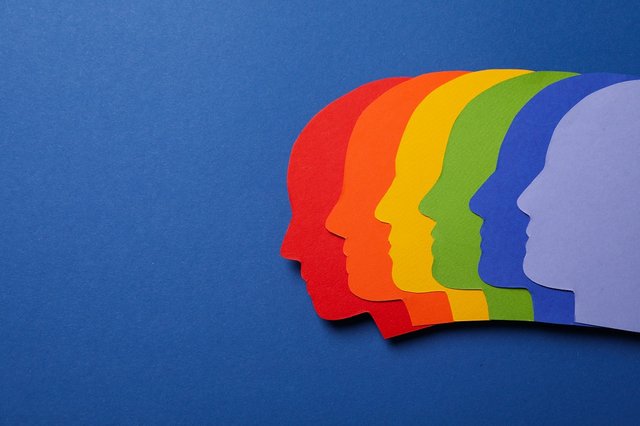The Psychology of Colors: How They Affect Your Mood and Mindset
What Is Color Psychology?
Color psychology is the study of how colors affect our emotions, behaviors, and perceptions. Different colors can trigger different feelings and mental states. For example, warm colors like red and orange tend to energize us, while cool colors like blue and green promote calmness.
Key Point: Colors are not just for decoration; they can influence our mood and mindset in powerful ways.
Red: The Color of Energy and Passion
Red is a bold and intense color. It’s often associated with energy, excitement, and passion. Red can increase heart rate and stimulate feelings of warmth and strength. However, too much red can also lead to stress or anger.
- Positive Effects: Passion, excitement, energy.
- Negative Effects: Aggression, stress, restlessness.
Key Point: Red can be energizing, but it’s best used in moderation if you want to avoid feeling overwhelmed.
Blue: The Color of Calm and Focus
Blue is often considered a calming color. It’s linked to feelings of tranquility, stability, and trust. This is why many businesses use blue in their logos or offices to create a sense of reliability. Blue can also help improve focus and concentration, which is why it’s a great color for study areas or workspaces.
- Positive Effects: Calmness, trust, focus.
- Negative Effects: Sadness, feeling distant.
Key Point: Blue can help you relax and concentrate, but too much of it can make you feel distant or melancholic.
Yellow: The Color of Happiness and Optimism
Yellow is often associated with sunshine, warmth, and happiness. It’s a bright and cheerful color that can lift your mood and make you feel more positive. However, if there’s too much yellow, it can cause anxiety or frustration, especially in large spaces.
- Positive Effects: Happiness, energy, optimism.
- Negative Effects: Anxiety, irritability.
Key Point: Yellow can boost your mood, but it’s important to balance it with other calming colors.
Green: The Color of Balance and Healing
Green is a color that symbolizes nature, growth, and balance. It is often used to create a peaceful and harmonious atmosphere. Green can reduce stress and help us feel more relaxed. This is why many hospitals and wellness spaces use green to promote healing.
- Positive Effects: Calmness, relaxation, balance.
- Negative Effects: Envy, stagnation (in some contexts).
Key Point: Green promotes peace and harmony, making it ideal for relaxation areas.
Orange: The Color of Creativity and Enthusiasm
Orange is a bright, warm color that combines the energy of red with the happiness of yellow. It’s often associated with creativity, enthusiasm, and warmth. Orange can encourage social interaction and inspire creativity. However, too much orange can feel overwhelming or distracting.
- Positive Effects: Creativity, enthusiasm, warmth.
- Negative Effects: Overstimulation, restlessness.
Key Point: Orange is great for creative spaces, but it’s best to balance it with cooler colors to avoid overstimulation.
Purple: The Color of Luxury and Spirituality
Purple has long been associated with royalty, luxury, and spirituality. It’s a rich, deep color that can evoke feelings of elegance, wisdom, and mystery. Light shades of purple, like lavender, are also known to be calming and promote relaxation.
- Positive Effects: Luxury, creativity, spirituality.
- Negative Effects: Overindulgence, moodiness (in some contexts).
Key Point: Purple is ideal for creating an atmosphere of elegance or deep thinking, but can feel heavy if overused.
White: The Color of Purity and Simplicity
White is often seen as a color of purity, simplicity, and clarity. It represents cleanliness and new beginnings. White can make a space feel open and spacious, but too much white can feel sterile or empty.
- Positive Effects: Cleanliness, simplicity, fresh starts.
- Negative Effects: Sterility, emptiness.
Key Point: White can promote a clean, fresh atmosphere, but it’s best to combine it with other colors to add warmth.
Black: The Color of Sophistication and Mystery
Black is a powerful and sophisticated color. It’s often linked to elegance, authority, and mystery. While black can make a space feel stylish and dramatic, it can also evoke feelings of sadness or negativity if used excessively.
- Positive Effects: Sophistication, mystery, strength.
- Negative Effects: Sadness, negativity, heaviness.
Key Point: Black is great for creating a bold, stylish atmosphere, but it can also feel heavy or isolating in large quantities.
How to Use Colors for a Positive Impact
Now that we know how different colors affect our mood, here are a few tips on how to use them to your advantage:
Choose Colors Based on the Activity: If you need focus and calm, use blues or greens in your workspace. For energy and creativity, incorporate orange or yellow.
Balance Bold Colors with Neutrals: If you love bold colors like red or yellow, balance them with neutral tones like white or beige to avoid feeling overwhelmed.
Use Colors to Reflect Your Mood: When decorating a space, choose colors that match the mood you want to create. For a peaceful bedroom, go for soft blues or greens; for a lively living room, try a mix of orange and yellow.
Key Point: The right colors can help you create the perfect atmosphere for different moods or activities.
Conclusion: The Power of Color in Your Life
Colors are much more than just decorative elements—they can influence how we feel, think, and behave. By understanding the psychology behind colors, we can use them to create spaces and environments that promote positivity, calm, creativity, and focus. Whether it’s choosing the right colors for your home or using them to enhance your mood, color is a powerful tool for shaping your mindset.
Key Point: The colors around you can have a significant impact on your emotions and mindset—use them wisely!

Upvoted! Thank you for supporting witness @jswit.